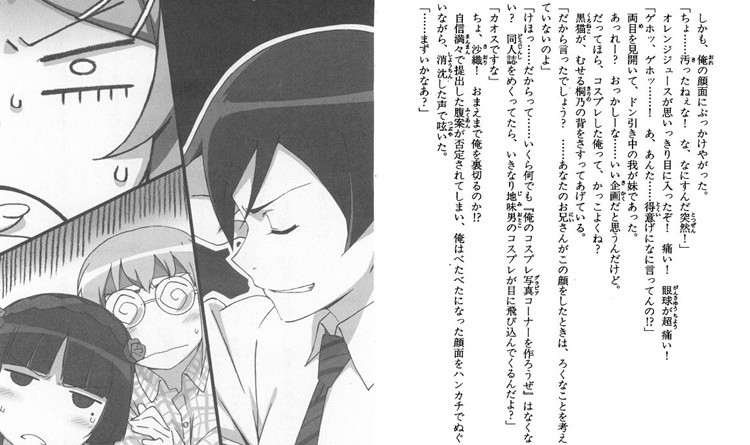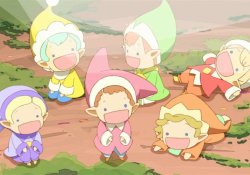Have you heard of the Light novel Japanese? This word is very recurrent when we talk about anime today, where the vast majority are based on and derived from works light novel and not manga like they used to.
In this article we will deeply analyze the meaning of Light Novel, what are the differences between these books and other common literature, some curiosities and recommendations of famous light novels.
Índice de Conteúdo
What does light novel mean?
Light novel [ライトノベル] comes from English and means light, clear and light romance. Light novel they are basically normal books, but they have illustrations on some pages and are divided into several volumes.
The name romance does not necessarily indicate that the book is love stories, for that you would have to delve deeper into the meaning of the word Novel. In the same way that novels are not always novels.

The term “light reading” probably comes from the simplicity of Japanese novels. Even though the book has hundreds of pages and volumes, they are called light readings because of the direct way the author tells the story.
Usually ordinary books are complex readings that not every young person would be able to understand. The purpose of the Light Novel is to easily reach as many audiences as possible. Just like Stephen King's books.
More information and characteristics of a Light Novel will be mentioned below when we mention the differences between a Book and a Light Novel.
The Japanese also call the Light novels in ranob [ラノベ] or rainobe [ライノベ].
How did the Light Novels come about?
At light novels they are initially published as serials, usually published in magazines or on the internet, and then released and bound in books. Many of these works emerged from blogs on the internet.
With the proliferation of the habit of reading in Japan, light novels have grown into the most varied forms of publication, from the traditional serials in newspapers, through literary magazines and even for Smartphones.
The content of these light reads took influences from manga and even popular movies like Star Wars. Light novels can also be considered an evolution of magazines. pulp.

In the 1970s, most Japanese pulp magazines, using manga-style covers, began placing illustrations at the beginning of each story, and including articles on popular movies, anime, and video games.
This ended up making practically every Light Novel have manga-style illustrations on its cover and in the middle of each chapter of the story. Usually a volume has about 15 to 20 illustrations and even comes with poster.
Differences between a book and a light novel
Light Novel is basically a book, and with many pages. Yet there are many differences between an ordinary book or ordinary literature and a light novel. Shall we analyze some of these differences?
Light novels are usually 100 to 300 pages long and are released in volumes. Usually famous Light Novels receive up to more than 20 volumes, being as extensive as a manga work.
A chapter of a Light novel usually has around 5000 to 7000 words. A complete volume (book) usually has 40,000 words, and is often divided into 5 chapters of around 200 pages.

What differentiates a Light Novel most is its language, which usually has a vocabulary easily understood by teenagers and adults, full of slang, popular terms and written in short paragraphs.
Light Novels use few easy-to-understand ideograms or ideograms, while other traditional Japanese books have complex ideograms, where some Japanese even need to resort to a dictionary.
Another factor that greatly differentiates Japanese Literature for a Light Novel is the stories, many of these books are aimed at young audiences, have fanciful stories, or about teenagers, school life, even action and fighting.
It is difficult to explain the difference between books and light novels in English, since many of these differences are lost in the translation from Japanese to English.
The article is still halfway through, but we recommend also reading:
Trivia about Light Novels
Have you noticed that most Light Novels have giant titles? Exactly, many authors went on a wave of putting the name of their books as if it were the synopsis of the story.
It is common to have books and anime with giant titles like "There's no way my sister can be that cute" or "We Still Don't Know the Name of the Flower We Saw That Day" and this is just the beginning.
Most light novels released today follow this trend of long and funny names. We even did an article talking about the gigantic names from Light Novel and Anime.

Another interesting fact is that generally Light Novels, despite having few illustrations, are also done in black and white. Only the cover and illustrations at the beginning of the book are colored and printed on strong paper.
Some examples of Light Novels that were successful in Japan are: Sword Art Online, Toradora, Zero no Tsukaima, Accel World, Monogatari Series and many others. A large part of the anime you know are adaptations of a Light Novel and not a manga.
Light Novel in the West
Between 2000 and 2010 the Light Novels were not as well known in the West. Its success came in 2013 when the Yen Press created a commercial strategy to take the Light Novel West in English.
In Brazil, the Light Novels took a longer time to get into the hands of Brazilians. One of the first Light Novels published in Brazil was No Game No Life, written by a Brazilian and popularized by his anime.
In fact, the first Light Novels translated into Portuguese were yaoi stories. Editora NewPOP brought in 2010 the books Gravitation and Tarot Café becoming popular for bringing alternative works.
The publisher also brought Madoka, No.6, Fate, Log Horizon, Re:Zero, Toradora, Zero no Tsukaima and Shakugan no Shana. Thanks to this provision, in 2018 competing publishers also started translating Light Novels.







